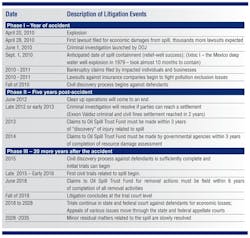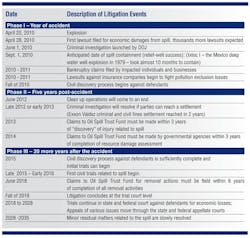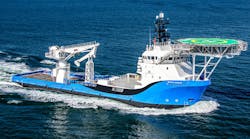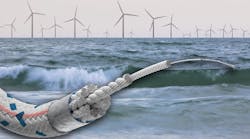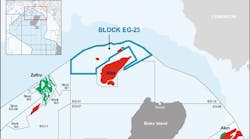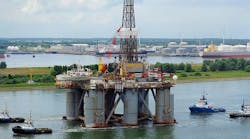Legal residuals may outlast spill residuals
Eldon Ball
Senior Editor,
Technology & Economics
Legal wrangling regarding the BP Macondo blowout in the Gulf of Mexico can be expected to go on for years. Just how long and far-reaching the legal process will be is often not well understood by oil and gas companies that have never experienced an event of this magnitude.
“It will be a very involved, tedious, and long-term process,” says attorney Lela Hollabaugh, a litigation attorney with Waller Lansden Dortch & Davis in Nashville, Tennessee. She has been litigating cases for 19 years and working with energy companies for the last decade. She also has extensive experience in insurance litigation.
“It can accurately be referred to as a generation of litigation,” Hollabaugh says.
Enormous impact
Drawing upon post-spill litigation after theExxon Valdez spill and similar mass tort cases, Hollabaugh tracked potential litigation and the timing for filing claims and trials to illustrate the enormous impact the BP spill will have on the legal system. Her projected “Generation of Litigation” timeline is illustrated in the adjacent table. It breaks down how the legal matters might play out over the next 25 years.
“The number of suits filed at this point totals about 320,” Hollabaugh says, “and that can be expected to increase as time goes by. At this point, more than $200 million has already been paid in claims, and that number will continue to grow.”
The full effect of the suits will depend on the number of parties included and the number of courts involved.
To speed the process, the Judicial Panel on Multidistrict Litigation has already heard arguments on requests for where to consolidate the various suits – in New Orleans or in Houston, she explains. Other locations have also been suggested to the panel. The MDL may group the types of claims and where they are heard based on the nature of the claim. These decisions help to streamline the process. The court assigned to oversee this litigation will appoint a plaintiffs’ steering committee to guide the direction of the claims asserted and determine what information to pursue and whom to depose.
Discovery process
As the timeline indicates, the discovery process will probably stretch into 2015.
“The discovery process can become quite lengthy, since lawyers can get ‘information relevant to any claim’ or that might lead to information relevant to the claim,” Hollabaugh says. “As you can imagine, that could open up a lot of possible discovery paths.”
One of the things the defendants in this process should prepare for, Hollabaugh says, is the amount of company manpower that will have to be dedicated to discovery searches.
“When you consider the amount of electronic communication in use today, email searches, for example, can be quite extensive and time-consuming. There are also a lot of records kept relative to the process of drilling and completing the well that will be examined – including government agency records. TheExxon Valdez litigation process took 20 years to resolve.”
In addition to the civil claims, the Department of Justice is pursuing an investigation into possible criminal violations.
“Criminal charges have not yet been filed,” Hollabaugh says, “but an investigation began in June and we expect it to be concluded no sooner than late in 2012, if not later. Again, theExxon Valdez criminal and civil fines settlement was reached in two years, and we expect the investigation in this case to take longer.”
Offshore Articles Archives
View Oil and Gas Articles on PennEnergy.com
